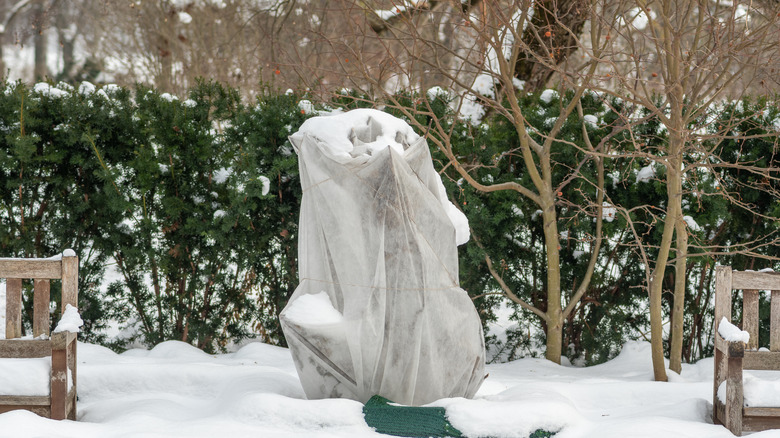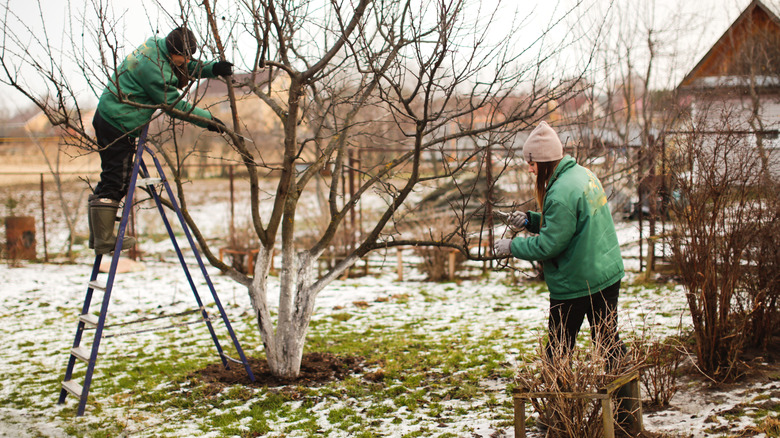The Best Thing To Do To Your Frost-Bitten Trees This Winter
The arrival of winter brings not only the beauty of snow-covered landscapes but also the threat of frost damage to your beloved trees. Frost, a thin layer of ice crystals that forms when temperatures drop below freezing, can cause significant harm to trees, particularly young and newly planted ones. It's always best to safeguard your trees from frost's icy grip due to these potentially severe and even deadly consequences.
Frost damage occurs when the water within a tree's cells freezes and expands, puncturing the cell walls. This rupture disrupts the tree's ability to transport water and nutrients, leading to various symptoms, including leaves and twigs that appear scorched or brown. Frost can cause cracks or splits to develop in the tree's bark, exposing the delicate inner tissues to the harsh elements. In severe cases, frost damage can result in the death of the branches or even the entire tree.
Be proactive to ward off frost-bitten trees
While frost damage cannot be entirely eliminated, several proactive measures can be taken to minimize its impact on your trees. First, you want to water trees adequately. Maintaining proper soil moisture helps trees better withstand frost. Water trees deeply in the fall and early winter, allowing the soil to absorb and store moisture. Next, you'll want to add plenty of mulch around your trees. Applying a layer of organic mulch, such as bark chips or wood shavings, around the trunk helps insulate the soil and protect the roots from frost damage. Aim for a 1-2 inches deep layer that covers about a 3-foot diameter.
Covering plants is a good frost-protective option whenever the temperature dips south of 32 degrees Fahrenheit. This is especially important for young trees. Cover your trees with burlap, frost blankets, or other protective materials during periods of extreme cold. To further insulate, add a thick extra layer of soil around the tree's base of about 1-2 feet in height.
Treating frost-bitten trees
Despite your best efforts, frost damage may still occur. When that happens, prompt action can help your trees recover and thrive. Start by providing regular deep watering to replenish the moisture lost due to frost damage. This will help the tree rehydrate and strengthen its root system, crucial for nutrient uptake and overall growth.
As the risk of frost dies down, begin a consistent fertilization program. Incorporating a regular and nutrient-rich regimen will provide the essential elements the tree needs to mend damaged tissues. The tree can restore its vitality and produce new growth with adequate and supportive nourishment.
Lastly, exercise caution when pruning frost-damaged trees, which can lead to common pruning mistakes. Avoid pruning immediately after a tree experiences frostbite, waiting until one to two weeks after it has gone to assess the extent of the damage. Carefully remove dead or severely damaged branches to promote healthy growth and prevent disease.


